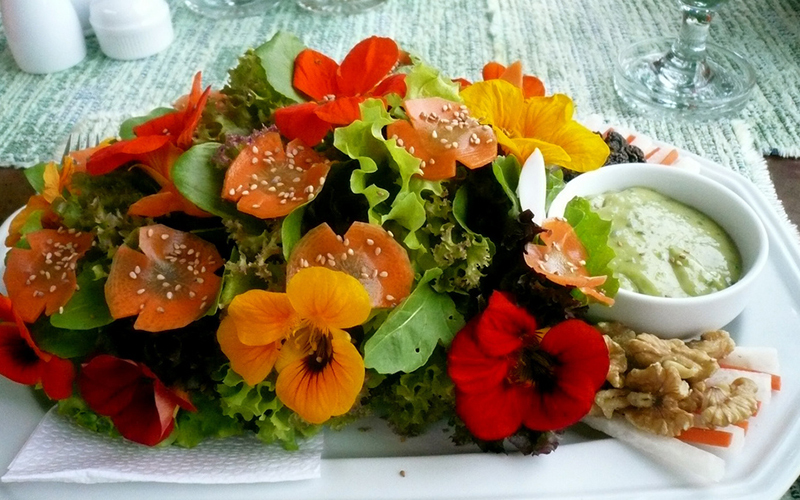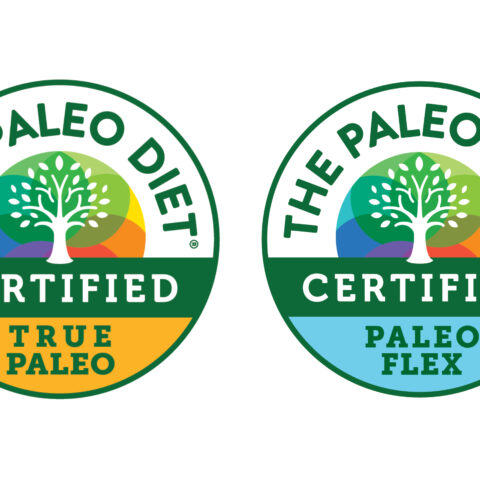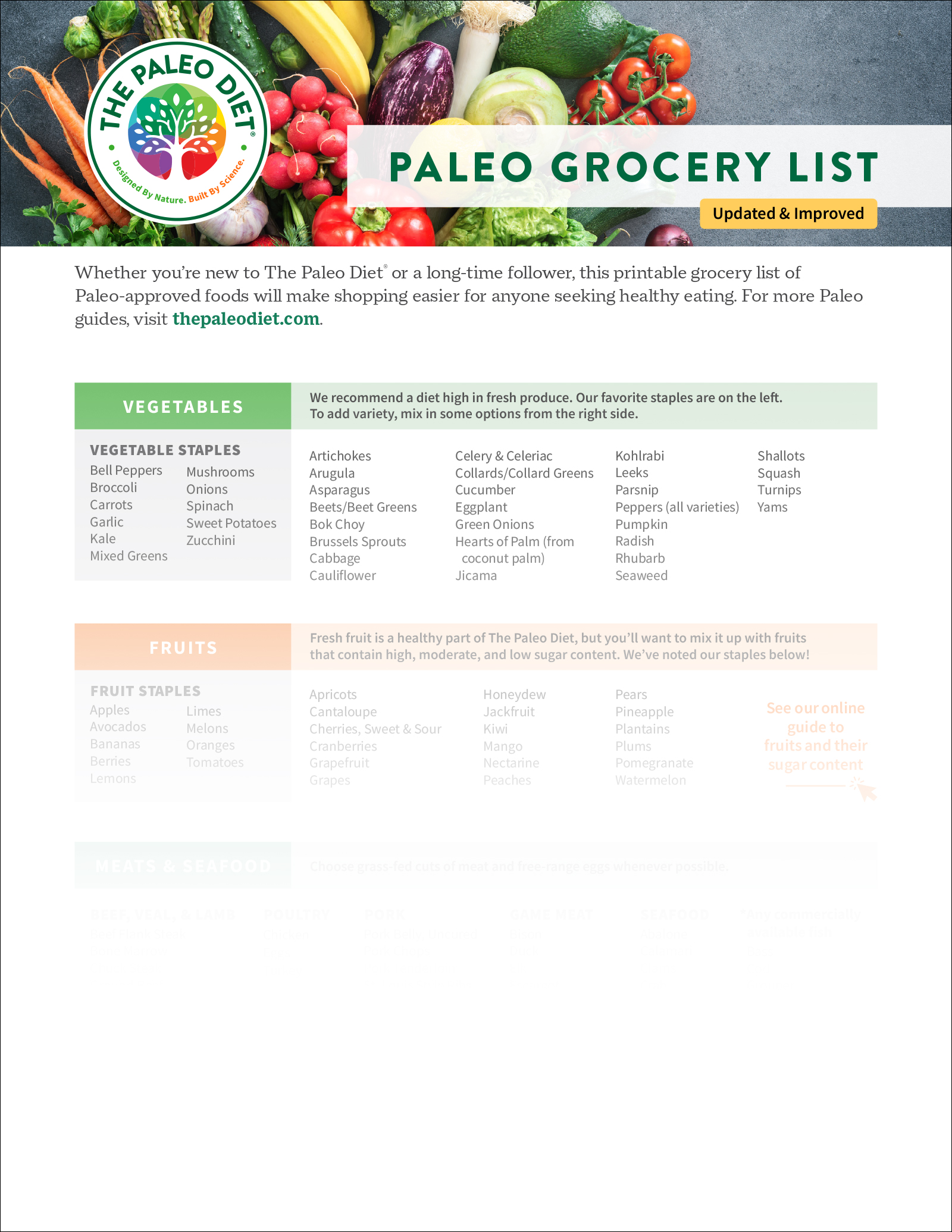National Nutrition Month and Paleo: Can We Find Common Ground?

March is National Nutrition Month, and according to the Academy of Nutrition and Dietetics,1 “the campaign is designed to focus attention on the importance of making informed food choices and developing sound eating and physical activity habits.”
A recommendation from the U.S. Department of Agriculture (USDA) suggesting we cut out grains to avoid leaky gut or rely on leafy greens rather than milk for calcium is a long way off. But are there any suggestions for good health which parallel what true Paleo Diet living exemplifies?
The USDA2 offers several resources for getting yourself on track for eating a healthier diet, including eating right on a budget, food plans, and tips of the day. Unsurprisingly, the tips of the day tend to include advice like “make sure half your grains are whole grains” and “choose low-fat dairy products in order to keep the calorie count low.” But who decided these tips?
Where Dietary Recommendations Come From
Marion Nestlé’s Food Politics3 provides some insight in response to a report by the industry watchdog group, Eat, Drink, Politics4 on some of the corporate sponsors of the USDA including Coca-Cola, PepsiCo, Kellogg’s, General Mills, and the Dairy Council.
Marion Nestle, Paulette Goddard Professor of Nutrition, Food Studies, and Public Health Emerita at New York University, points out on her site5 that 7 of 12 of the major corporate affiliations of the American Society for Nutrition (ASN)—the organization that publishes the American Journal of Clinical Nutrition (AJCN) and the Journal of Nutrition—have affiliations with food companies including Coca-Cola, PepsiCo, The Sugar Association, The National Restaurant Association, ConAgra, McDonald’s, Kellogg’s, Mars, and many others. These food industry corporations influence nutrition healthcare professionals’ curriculum, meanwhile in part or in whole developing dietary recommendations for the general public.
So you’re saying, I’ll just find a Paleo practitioner! Unfortunately, it’s not that easy. Paleo is still a niche market where the many interpretations of what is and what isn’t Paleo are at odds.
We don’t know what we don’t know, until we know. In other words, it’s easy to simply go to the doctor when something is wrong and, if there is no indication that what you’re eating has a role in how you’re feeling, there isn’t a reason to doubt their council.
In an ideal world, we should be able to go to the doctor, get sage medical advice, and be straight on our path to healing. And in some cases, this can happen. If you’ve found an incredible functional medicine doctor or naturopath who knows to ask if you’re eating gluten when you have a skin rash or explain how dairy plays a role in gassiness and bloating, great! But for many, this is not the case. As a result, patients are faced with long-term medications and challenges dealing with moderate to severe symptoms.
What Healthy Eating Should Look Like
Imagine how a “MyPlate” schematic would look if it were focused on a truly healthy approach to eating. Let’s pause on calling it Paleo for a moment. If we position it as a seasonal, local, sustainable way to eat, it would include abundant veggies with some fruit in moderation, mindfully sourced proteins, and a variety of balanced fats.
There is very little room, if any, for refined and processed foods with little to no nutrient density. As in very little of the very products the main sponsors of the Academy of Nutrition and Dietetics have in their best interest to endorse.
Let’s face it: much of what we consider food in our country is no longer even food; rather, it’s part of a highly lucrative industry. So what’s the recourse? Who can we rely on to provide viable suggestions about what we really should eat?
What Can We Do? Educate!
Everyone in the community can benefit by learning the effects of refined wheat-based products, low-fat milks, and battery-raised chickens. And while global change isn’t going to happen overnight, if we can approach it in stages, it’s going to promote tremendous awareness.
One admirable and significant example is Jamie Oliver’s mission with Food Revolution:6 “My wish is to create a strong, sustainable movement to educate every child about food, inspire families to cook again, and empower people everywhere to fight obesity.”
On an individual level, see how many ingredients are in a label if you’re using something in a package. Investigate how far a food has traveled before it landed in your home. Reach out to functional medicine doctors in your area. Go to your local farmers market and shop fresh right in your community.
On a broader scale, start a community garden, offer to speak at your children’s school, or team up with other neighbors to create Paleo potluck meals or picnics on the weekend. By proactively approaching the health of our society with positive, fun activities, we can collectively get ourselves on the right track to health far more easily than sitting around stewing about erroneous MyPlate recommendations.
Remember, we can catch more flies with honey, and since honey is Paleo (once in a while), we may as well take this route!
References
[1] “National Nutrition Month.” National Nutrition Month. N.p., n.d. Web. 19 Mar. 2015.
[2] “ChooseMyPlate.gov.” ChooseMyPlate.gov. N.p., n.d. Web. 16 Mar. 2015.
[3] “New Study: Big Food’s Ties to Registered Dietitians.” Food Politics New Study Big Foods Ties to Registered Dietitians Comments. N.p., n.d. Web. 19 Mar. 2015.
[4] “New Study: Big Food’s Ties to Registered Dietitians.” Food Politics New Study Big Foods Ties to Registered Dietitians Comments. N.p., n.d. Web. 19 Mar. 2015.
[6] “Food Revolution Day – 15/05/15 – #foodrevolutionday.” Food Revolution Day 2015. N.p., n.d. Web. 19 Mar. 2015.




